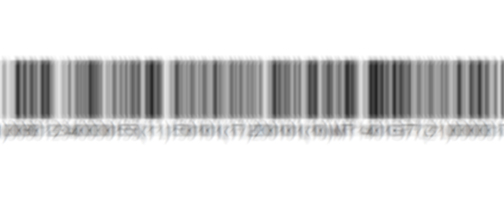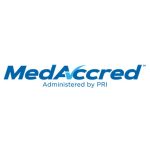The objective of medical device labeling is simple for medical device manufacturers. Label products safely, accurately and efficiently so the necessary medical devices can impact patients in need. Unfortunately, medical device manufacturers find themselves trying to label in an increasingly complicated environment. Continued globalization, labeling regulations such as the FDA’s Unique Device Identification (UDI) regulation, and heightened customer requirements continue to apply downward pressure on manufacturers to optimize their labeling environments. From centralized labeling to taking a closer look at the type of labeling software being used and selecting the right technology providers, here’s a closer look at how medical device manufacturers can leverage a simplified labeling environment to manage the complex.
Simple Labeling Change #1: Centralized Labeling
Centralized labeling is without question the best way to simplify your labeling environment because it saves money while improving labeling efficiency and accuracy. Without centralized labeling, companies may waste time updating a label in multiple spots or copying label content from one area to another, processes that can be time consuming and result in labeling errors. With centralized labeling, labels are printed using an interface that seamlessly communicates with the company’s ERP system. This integration decreases label template development time and labor costs. It also decreases labeling errors and associated customer returns. With centralized labeling, manufacturers can also centrally manage label templates in one location while having the ability to print labels to multiple locations. Centralized labeling also helps reduce labeling errors and wasted label stock because it standardizes processes and allows manufacturers to establish role-based access and permission parameters. This added level of control and security can significantly reduce labeling errors and the associated costly production downtime.
With centralized labeling, companies can also easily integrate label data with other systems’ databases such as Oracle, SQL or MS Access, simultaneously at print time, which means they can better leverage the data already housed in other systems as opposed to duplicating and maintaining the data separately. This allows companies to further maximize the return on investment of existing IT systems.
All of these aspects of centralized labeling position medical device manufacturers to increase labeling agility while reducing overhead. So how do you know if centralized labeling is right for your manufacturing environment? The first mistake companies make is assuming that centralized labeling is something best suited for global organizations or large enterprises. That is simply not the case. Any organization, regardless of size, that is looking to consolidate or standardize processes can realize benefits from centralized labeling.
Often, companies look to incorporate centralized labeling as part of a lean initiative. It is also a natural fit during periods of rapid growth, facility expansion or following an acquisition. A great place to start is by assessing your current labeling environment. If your current environment has manual steps or you are looking to eliminate wasted label stock, reduce labeling errors and IT overhead, centralized labeling definitely warrants a closer look.
Simple Labeling Change #2: A Closer Look at Current State of Labeling Software
Another way to simplify your labeling environment is to take a closer look at the type of labeling software you are using. Some medical device manufacturers rely on custom software that has been developed and re-developed over time to meet their organization’s labeling needs. Companies might find comfort in the custom software approach because they believe it is the only way to meet their system requirements and unique needs. However, the cost and time associated to develop, update and maintain custom labeling software quickly adds up, and the endless list of system requirements takes IT resources away from other projects. Whether developed in-house or with an outsider provider, custom software solutions are expensive to maintain and develop. Enter configured or off-the-shelf labeling software solutions. They boast vast capabilities and functionality without long implementation times or hefty price tags.
Off-the-shelf labeling software solutions prove to be particularly compelling for medical device manufacturers as they look to quickly and efficiently adjust their labels to meet compliance requirements or even changing customer requirements. This ability to quickly react to required changes is of the utmost importance to medical device manufacturers as patient safety is critical. With an off-the-shelf labeling software solution, you can rely on the labeling software provider to adjust for the changing requirements so you don’t have to.
In addition, off-the-shelf software solutions prove to be more cost effective for companies looking to do process validation because these solutions tend to be developed using a more secure and documented process compared to custom software solutions. This means that process validation does not need to be a six-figure investment for medical device manufacturers.
Likewise, configurable off-the-shelf labeling software solutions can easily accommodate specific company needs and requirements with VB (visual basic) scripting, customer interfaces and other configurable options, which means companies do not need to invest time and money building systems from scratch. Yet another hidden benefit of configurable solutions is the fact that they were developed using industry best practices and are continually updated based on learnings and feedback from a broad base of customers. The end result is that manufacturers can benefit from the same labeling best practices and capabilities available to all of the other companies in their marketplace.
Beyond looking at centralized labeling and off-the-shelf software solutions, medical device manufacturers can look to the specifics of software integrations to further simplify their labeling environments. Organizations should look to leverage label automation solutions that offer generic software integrations as opposed to proprietary ones. This means the label automation software will automatically integrate with other systems such as SAP or Oracle without requiring manufacturers to purchase additional software to make the integration possible. With proprietary integrations, you are more likely to have challenges upgrading because each integration is specific to each version of labeling software and ERP system. Label automation software that offers generic integration is a big win for medical device manufacturers, because it is more affordable, easier to maintain and quicker to implement.
Simple Labeling Change #3: Label Automation
Label automation is yet another simple labeling environment change that results in big benefits for medical device manufacturers. Without label automation, production line operators typically have to print a label by searching for and opening a label file, selecting print and hoping for the best. If the printed label has errors, label stock is wasted and the operator needs to repeat the process. With label automation, production line operators are able to print labels using a variety of simple triggers such as scanning, scales, actions within ERP systems or customer interfaces. Label automation eliminates manual steps and increases labeling accuracy.
Medical device manufacturers should also look to partner with barcode labeling software solution providers that can offer label automation while accommodating unique industry requirements. For example, medical device manufacturers using cleanrooms for production may not be able to have labeling workstations inside the cleanrooms, but they could have a monitor with access to a browser-based labeling interface. This allows cleanroom operators the ability to scan a lookup code or lot number to print a label and is a great example of how the right labeling solution can accommodate even the most unique production environments within medical device manufacturing.
Simple Labeling Change #4: Select a Partner, not a Vendor
The final way to simplify your labeling environment takes us well beyond the technical aspects of software and systems integrations. It has to do with the companies behind the software, because failure to choose the right software partners can undermine a company’s ability to leverage the aspects discussed thus far. It comes down to choosing partners, not vendors. Medical device manufacturers should seek to establish partnerships with labeling software providers that prioritize customer service and long-term relationships over those that simply sell software. Doing so can prove to be a distinct competitive advantage for medical device manufacturers as they look to maintain accurate, agile and efficient labeling environments. Strong software partners will be there to help navigate changes, troubleshoot issues and offer solutions with your company’s best interest in mind.
A closer look at your labeling environment will likely reveal opportunities to improve labeling accuracy and efficiency. As you can see from the examples provided throughout this article, simple adjustments to labeling operations can generate big savings for medical device manufacturers while ensuring the devices are labeled safely and accurately for the medical facilities and patients who rely on them.







